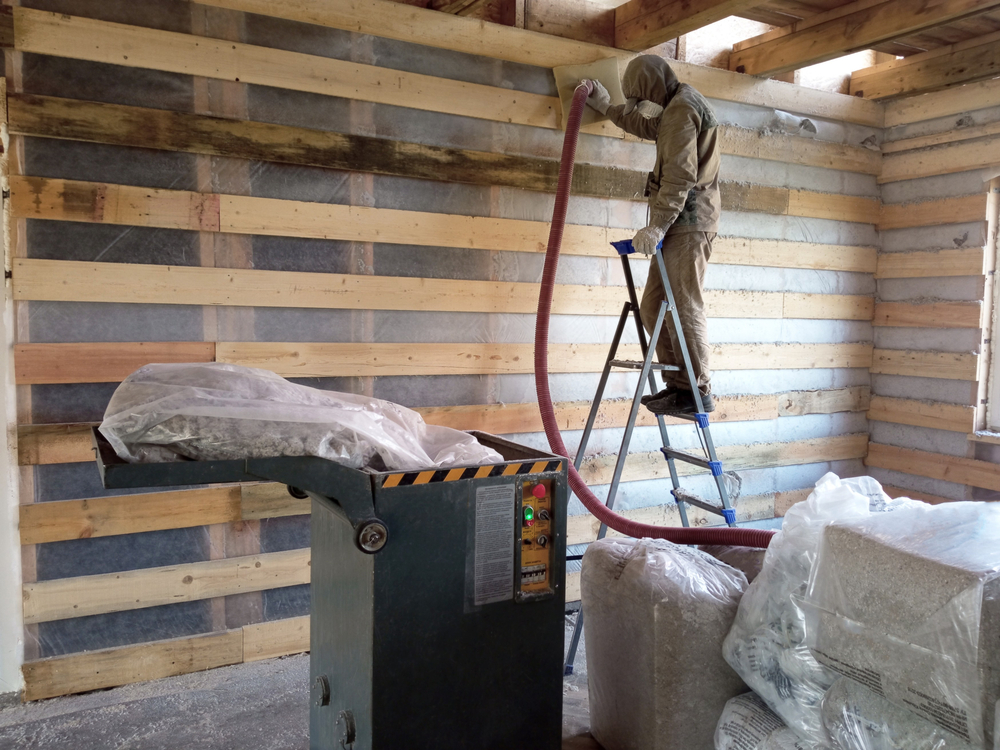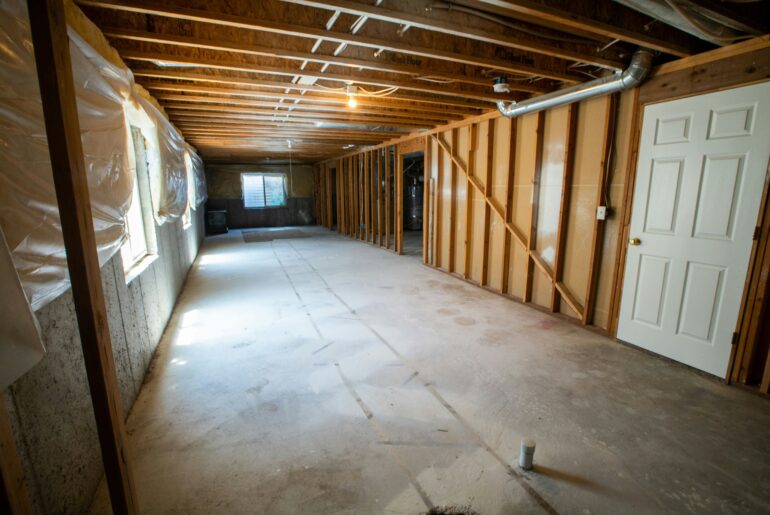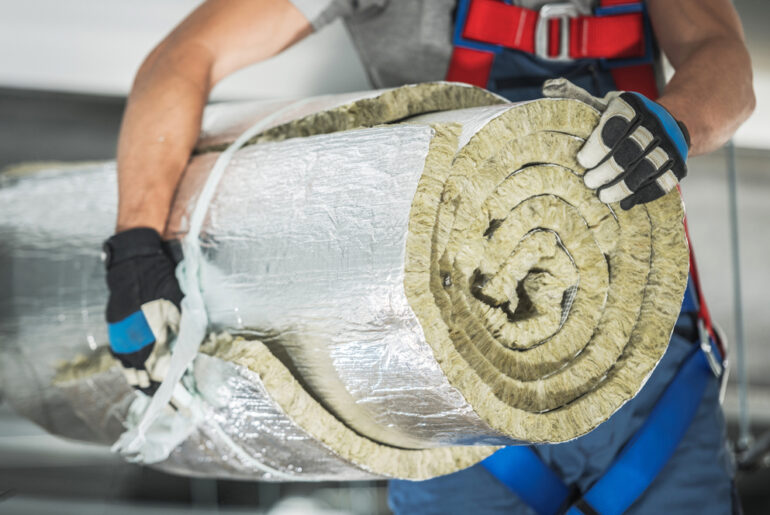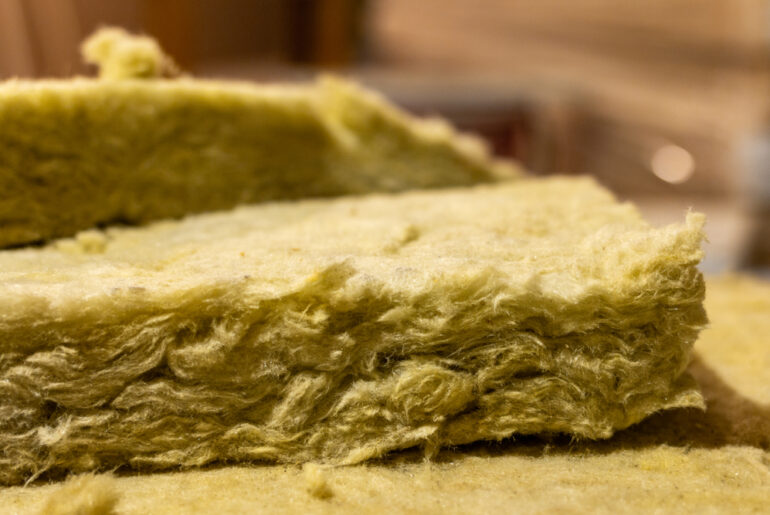Are you renovating your home or simply want to improve its waning insulation effectiveness? In these types of situations, it is natural to entertain the possibility of mixing fiberglass and cellulose insulation. But can you mix them?
Yes, you can mix cellulose and fiberglass insulation. Combining the two saves you the cost of tearing down and replacing material that had been previously installed. The only downside is the slight decrease in the R-value, but you can circumvent this by adding more layers of insulation.
The question now is should you mix cellulose and fiberglass insulation? Are the risks worth it? How effective would the mixture keep your house warm when the cold persists?
The rest of this article is dedicated to answering these questions. We also explore the strengths of each material and contrast them — to help you make a more informed choice if you decide to explore an alternative.
Should You Mix Cellulose and Fiberglass Insulation?
Fiberglass and cellulose are one of the most effective insulation materials, and it is perfectly okay to mix both insulation materials as the situation demands. Mixing cellulose and fiberglass insulation in homes is not a new idea. In fact, the process is commonly referred to as “capping” in the insulation industry.
Insulation professionals often create hybrid insulation by mixing different materials to achieve specific configurations and benefits. These hybrid insulations usually involve fiberglass because it is available as a blow-in or batt installation.
There are many situations where you have to consider hybrid insulation. For example, you might want to insulate your home with fiberglass or cellulose, only to discover the previous owner used the other materials. Capping allows you to install one material over the other without spending money tearing down the former.
Also, getting either of the two materials near you can be difficult, and shipping in just drives up your expenses. You should also consider hybrid insulation if either of the two materials is accessible.
Mixing cellulose and fiberglass insulations can help you avoid the cost of replacing your old and waning insulation type. Not to mention the time, stress, and energy you will be saving in the process. The mixture also gives you better noise canceling effect and moisture resistance. All the while still achieving your primary goal of improving and extending the lifespan of your home’s insulation.
Beyond these benefits, however, are a few drawbacks you should also be aware of. The major disadvantage of mixing different insulation materials is compression. Because cellulose has a higher density than fiberglass — that is, it is heavier per square inch — it will most likely compress the fiberglass. The compression results in a reduction in the mix’s resistance to heat.
The capacity of insulation to resist heat is measured as its R-value. You can also lose R-value by blowing cellulose over loose-fill fiberglass insulation. The decrease in R-value, in this case, is due to the tendency of cellulose to settle into loose-fill fiberglass and clog up air pockets, which help trap air and keep the house warm.
In both cases, you can still achieve your desired R-value by making up for it by increasing the depth of the new insulation.
What Will Be the R-Value of a Cellulose/Fiberglass Insulation Mix?
In the US, the recommended R-value ranges from R-13 to R-23 for walls and R-38 to R-49 for your attic. In Canada, the values are a bit higher, about R-20 for walls and R-60 for attics. You can achieve any of these standards with a mixture of cellulose and fiberglass insulation.
With proper calculation, you can adjust the depth of the newly installed insulation to make up for any possible loss in R-value in the existing one.
Can You Put Cellulose Over Fiberglass Insulation?
As previously mentioned, this is known as capping. Putting cellulose over fiberglass insulation is just as safe as installing either material. The only disadvantage is a possible loss in R-value, which can be prevented through planning and careful calculation.
Can You Put Fiberglass Over Cellulose Insulation?
Just as you can put cellulose over fiberglass, you can add fiberglass over cellulose insulation without danger. But the fiberglass has to be unfaced, that is, without a coating of a vapor retarder. Vapor retarders in the form of plastic or paper can trap moisture between the two materials, spoiling the fiberglass insulation and promoting mold growth in the cellulose.
How to Increase R-Value of Cellulose/Fiberglass Insulation Mix?
Below are some tips that can help you achieve a higher R-value of your Cellulose and Fiberglass insulation mix:
- Opting for blow-in insulation over the loose fill or batts makes it easier to achieve a higher R-value and to adjust for possible R-value loss.
- Avoid using fiberglass insulation with a vapor retarder over cellulose to prevent R-value loss in the fiberglass and mold growth in the cellulose.
- Check your attic for moisture leaks and ventilation to ensure the longevity of the insulation mixture.
- Take advantage of your depth guide to achieve your desired R-value easier during installation.
Can There Be Too Much Insulation?
Not really. But while you can add as much insulation as you want in your home, more is not necessarily better.
There is a diminishing return to insulation. That is, adding more material to your insulation will continue to increase your R-value to a point when the R-value will remain the same. When you reach this point, additional insulation will only cost you in expenses, time, and effort without improving energy efficiency or any other significant benefits.
Which Is Better: Cellulose or Fiberglass Insulation?
Should you decide against mixing the two, knowing how one compares to the other will help you choose the right material for you. We compare cellulose and fiberglass insulation based on the different factors below.
By efficiency
Cellulose is more energy efficient than fiberglass insulation. Cellulose has an R-value of R-3.5 per square inch, while fiberglass is 23% less effective, with an R-value of about R-2.5 per square inch.
By Cost
Both materials will cost you about the same amount. Depending on your location, you can expect to spend between $0.4 and $2 per square foot for either cellulose or fiberglass insulation. The installation fee for both materials is often the same.
By installation
Fiberglass is easier to install because it exists in batts to fill attic spaces and walls without needing expensive tools. You can still install blow-in cellulose and fiberglass by renting the necessary tools.
Overall
There is only a little difference between the two insulation materials. However, cellulose is a better choice for homes because of its higher efficiency. You should note that cellulose settles over time and loses its R-value and efficiency. Fiberglass has a longer lifespan and can get you over a century of insulation before needing to be replaced or supplemented.
Can You Mix Batt Insulation and Blown Insulation?
Fiberglass insulation comes in both batts and blown forms, while you will only find cellulose insulation in the blown form. The two forms of fiberglass insulation do not affect the result of the mix. Therefore, you can have a mix of batt-blown or blown-blown, fiberglass/cellulose without a problem.
Another alternative to mixing insulation is doubling up. Doubling up involves adding new insulation on top of an existing one of the same material. You double up on your insulation to achieve a higher value. But pretty much the same rules in mixing apply for doubling up.
For instance, doubling up in an attic without room for two layers will cause your insulation to compress. Compression means loss of R-value, making your effort a waste.
The law of diminishing returns is also at stake here. Doubling up or mixing insulation, for that matter, can only prevent heat loss to a limited extent. While you will get a higher R-value with thicker insulation, you won’t be saving more on energy because the insulation’s effectiveness reduces as the R-value increases.
So save yourself some cash and energy after achieving the recommended R-values for your region. You can instead reduce your energy costs by checking for under-insulated areas in your home and doubling up on them.





